Undoubtedly the most common and widespread of these species is the cinnabar moth, whose caterpillars can reliably be found on almost any decent stand of ragwort. Turning the plant's defences to their own purposes, the caterpillars incorporate the toxins into their own bodies, and then advertise their distastefulness with bold orange and black stripes.
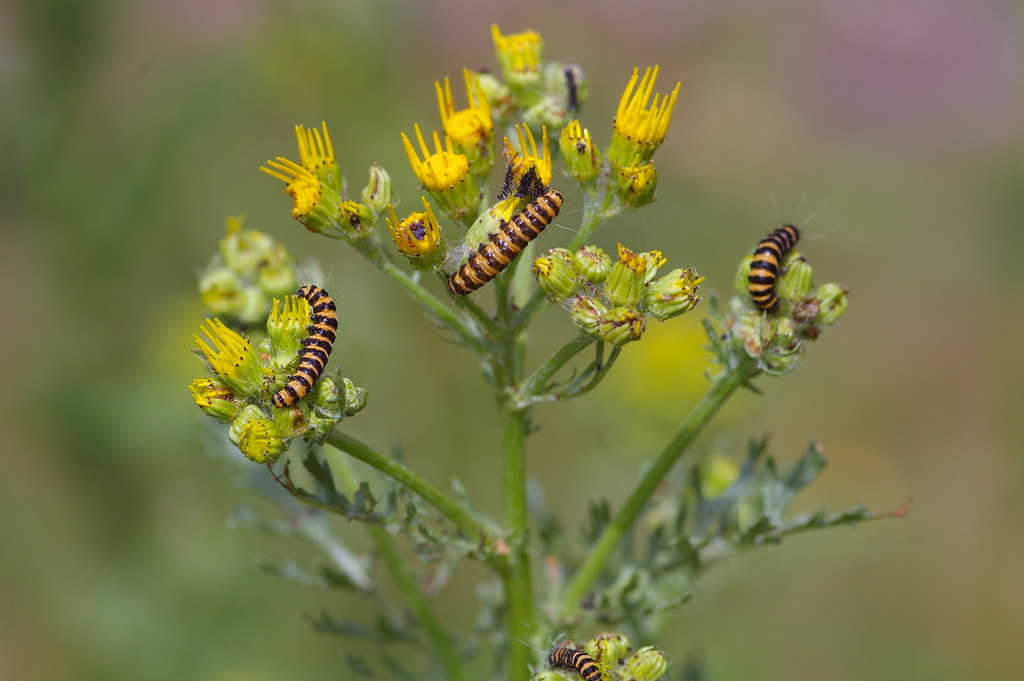
Cinnabar caterpillars munching their way through ragwort

Close-up of a single cinnabar caterpillar
The adults are equally toxic, and even bolder in their advertisement, going for the classic warning colours of red and black. The sight of an adult moth bursting out of the undergrowth in a blaze of colour often leads to people searching through their butterfly books for a bright red or pink species.
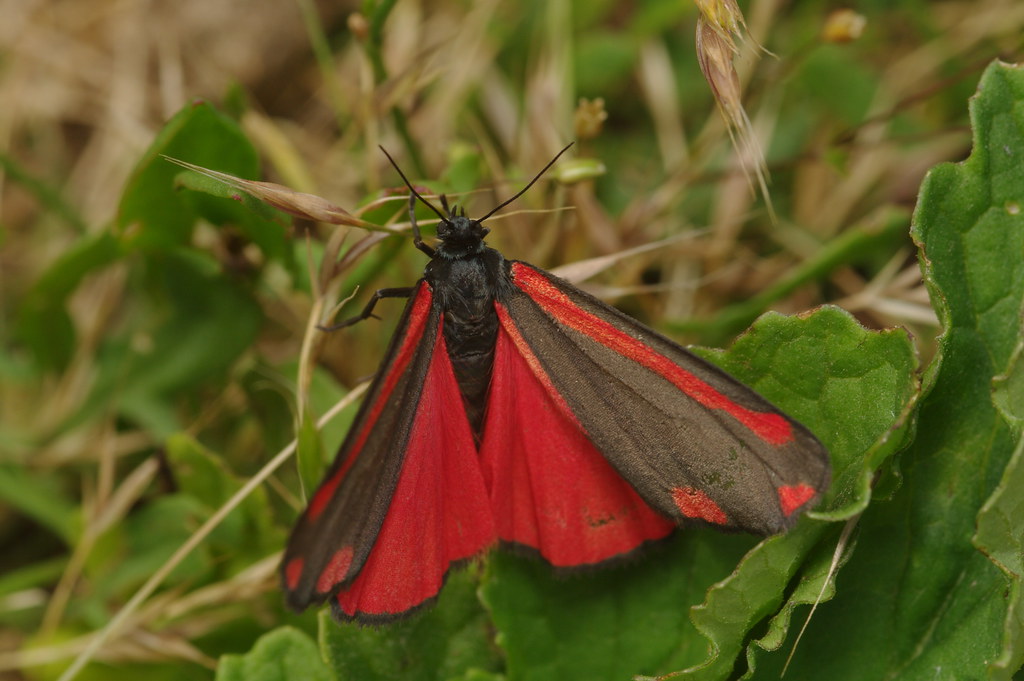
Adult Cinnabar moth
In addition to the specialist species, some of which are extremely rare, there are a host of species for which ragwort provides an invaluable source of pollen and nectar, especially in the wasteground areas which it frequently occupies. At this time of year ragwort is the first plant I head to when looking for interesting insects.
One of my favourites is the mining bee Colletes fodiens, another species lacking an English name, perhaps it could be the ragwort bee? Although not entirely reliant on ragwort, I seldom see it on any other flower. Superficially resembling a small bright honeybee, the broad white stripes on the abdomen instantly distinguish it as a Colletes species, although separation from the other Colletes species is somewhat trickier, see here for some further information.
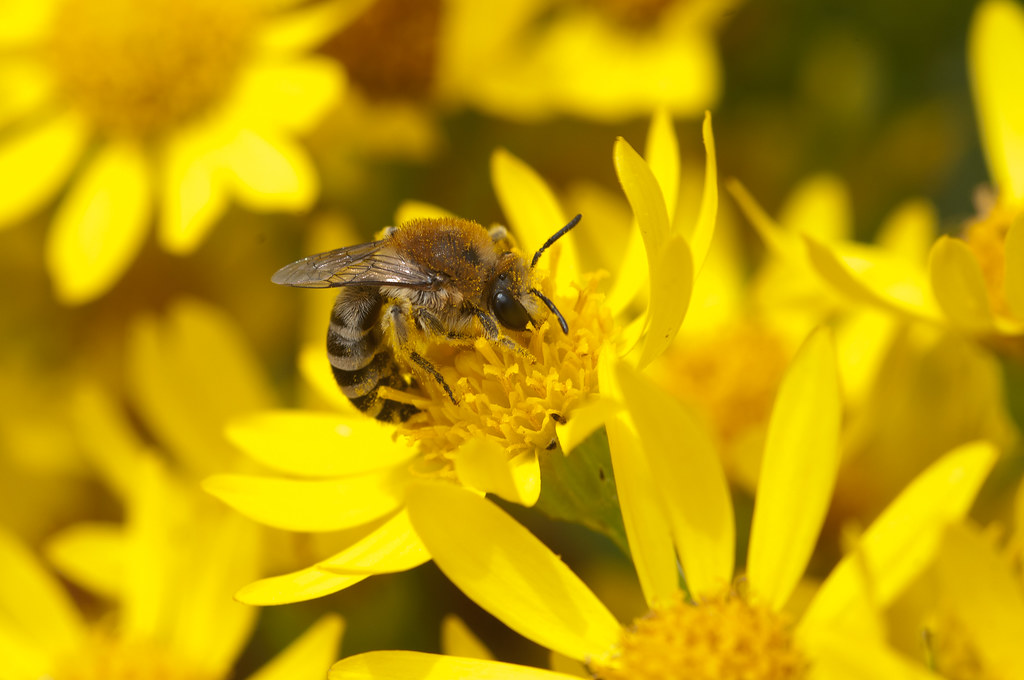
Colletes fodiens foraging on Ragwort
On any given day there are over a hundred other species which could be found on ragwort, below is just a small selection of the variety of life supported by this one "injurious weed". There is no doubt that ragwort can cause problems when in the wrong place, but in the vast majority of cases it is a extremely valuable component of the British countryside, and one which deserves a better reputation than it currently possesses.
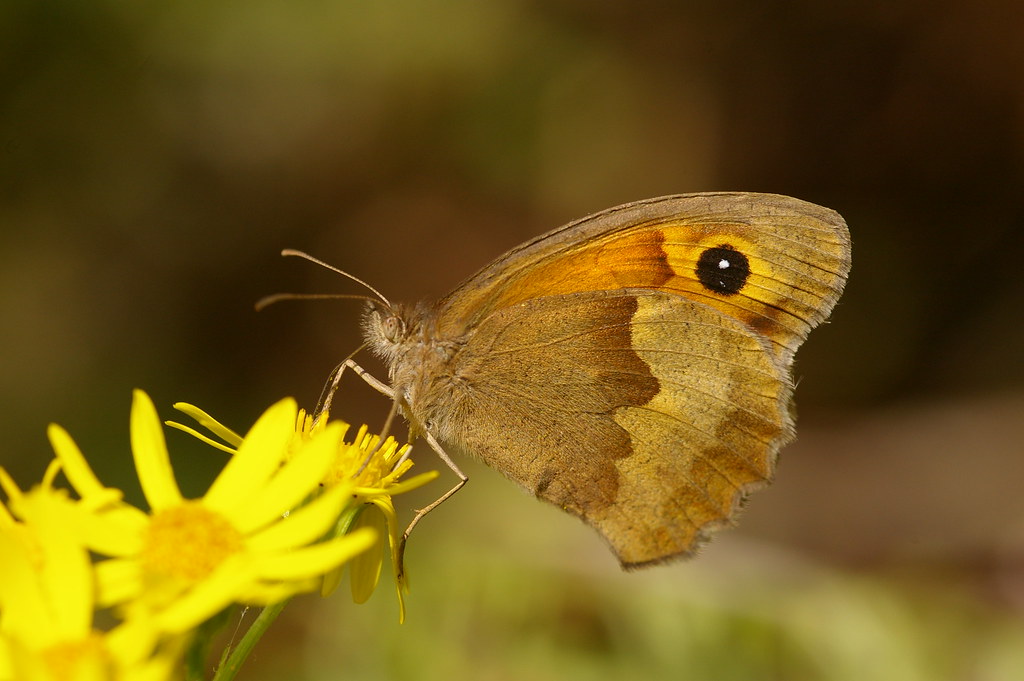
A common sight of the British summer, a Meadow Brown
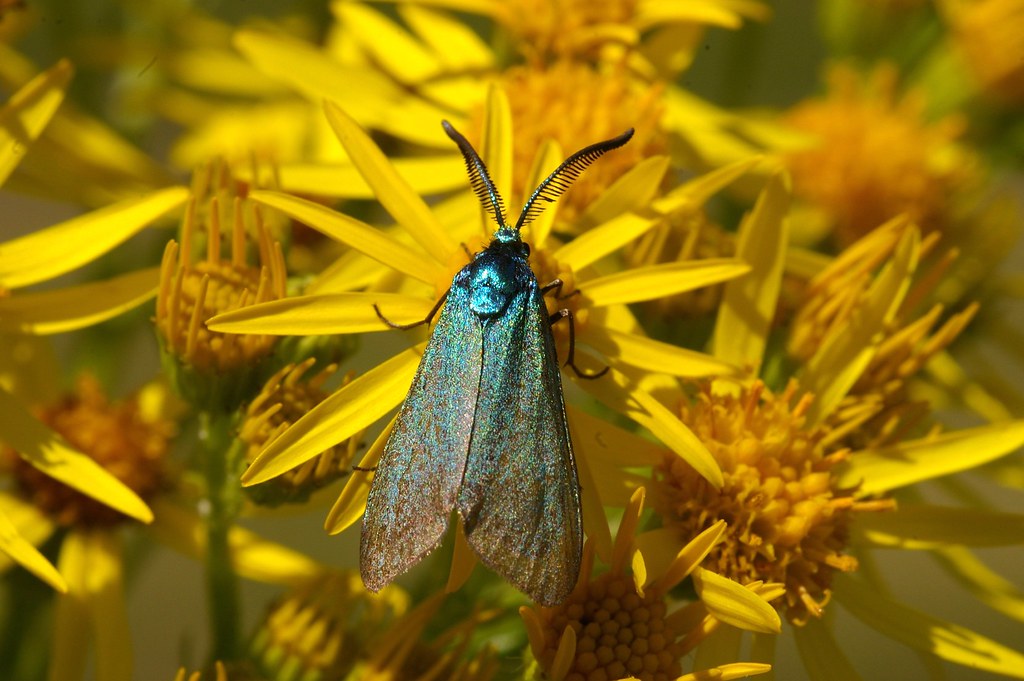 The striking Forester Moth, now a somewhat scarce and declining species
The striking Forester Moth, now a somewhat scarce and declining species
The attractively patterned Antler Moth
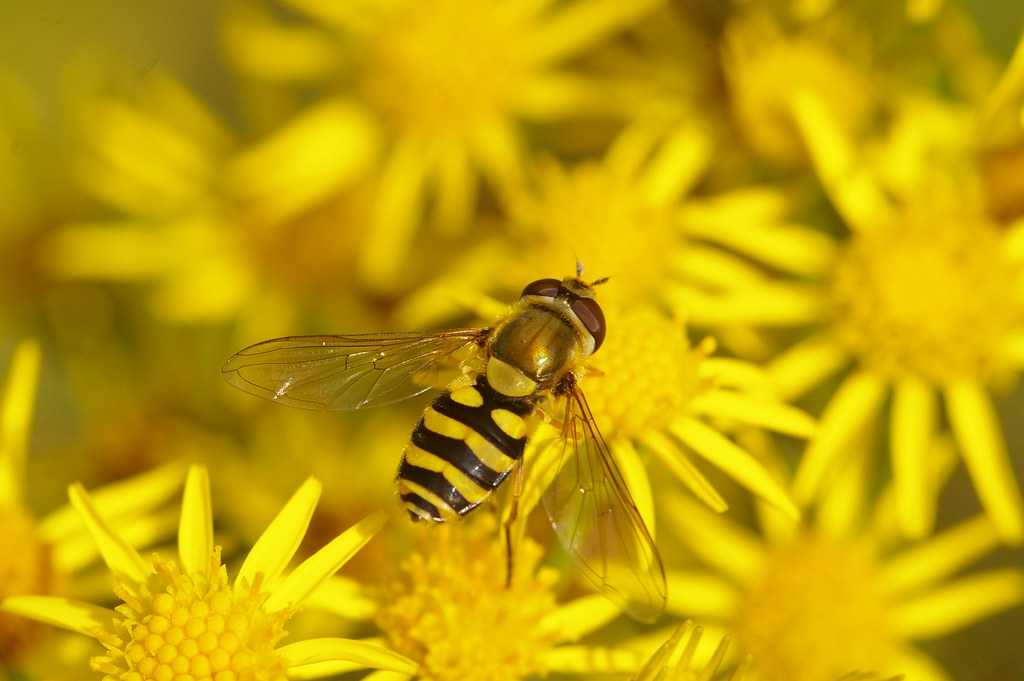
A classic hoverfly, Syrphus ribesii
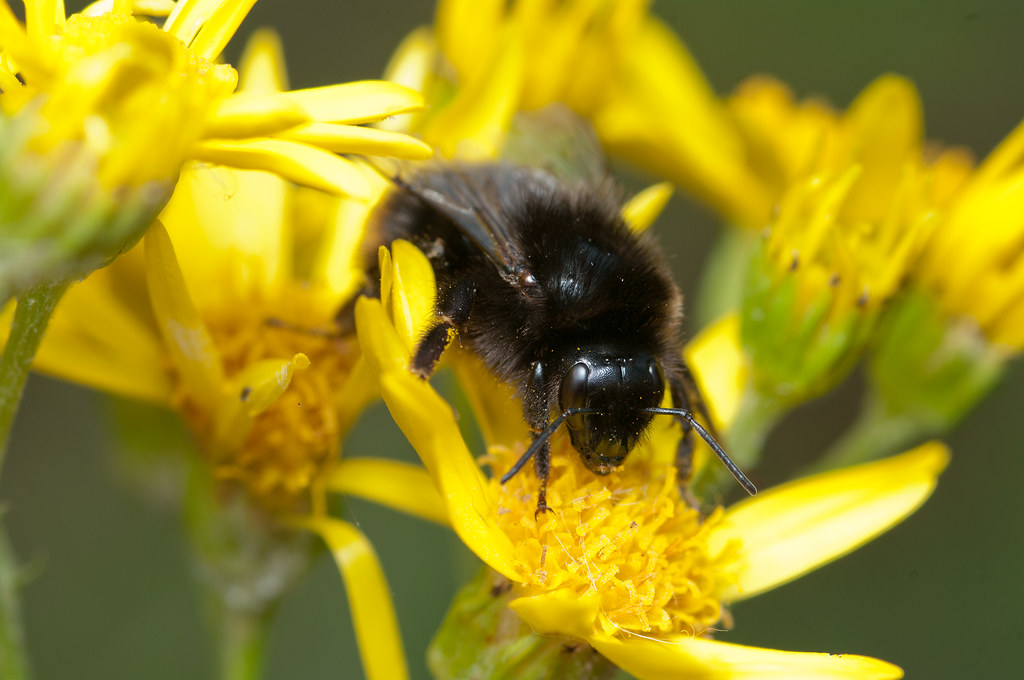
A red-tailed bumblebee, one of several bumblebee species to be found on ragwort
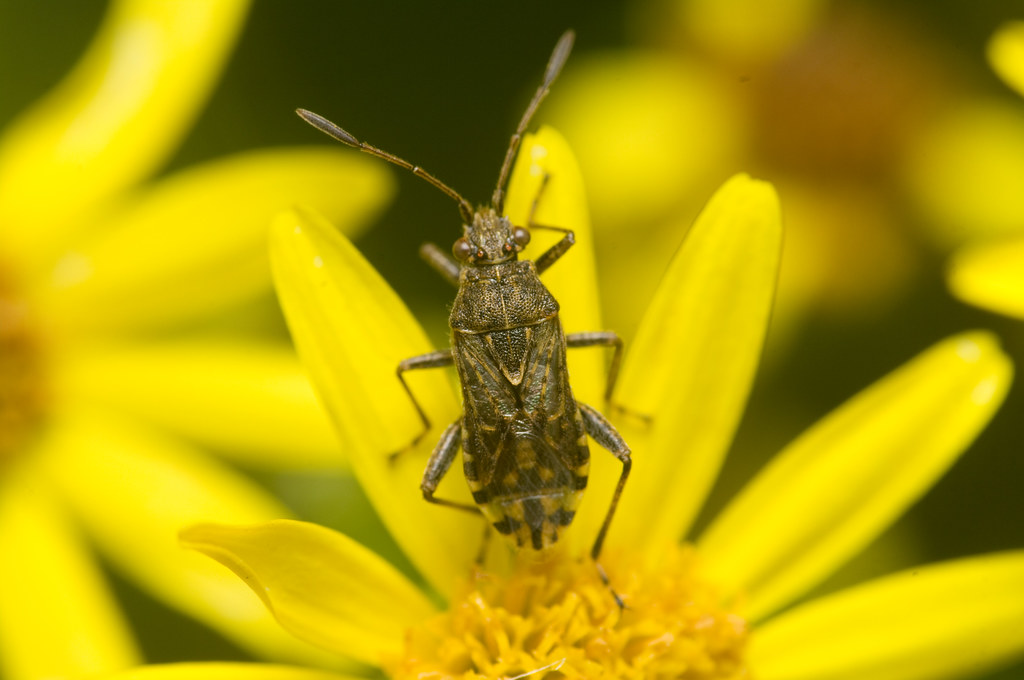
Stictopleurus punctatonervosus, a recent colonist to much of the UK
No comments:
Post a Comment